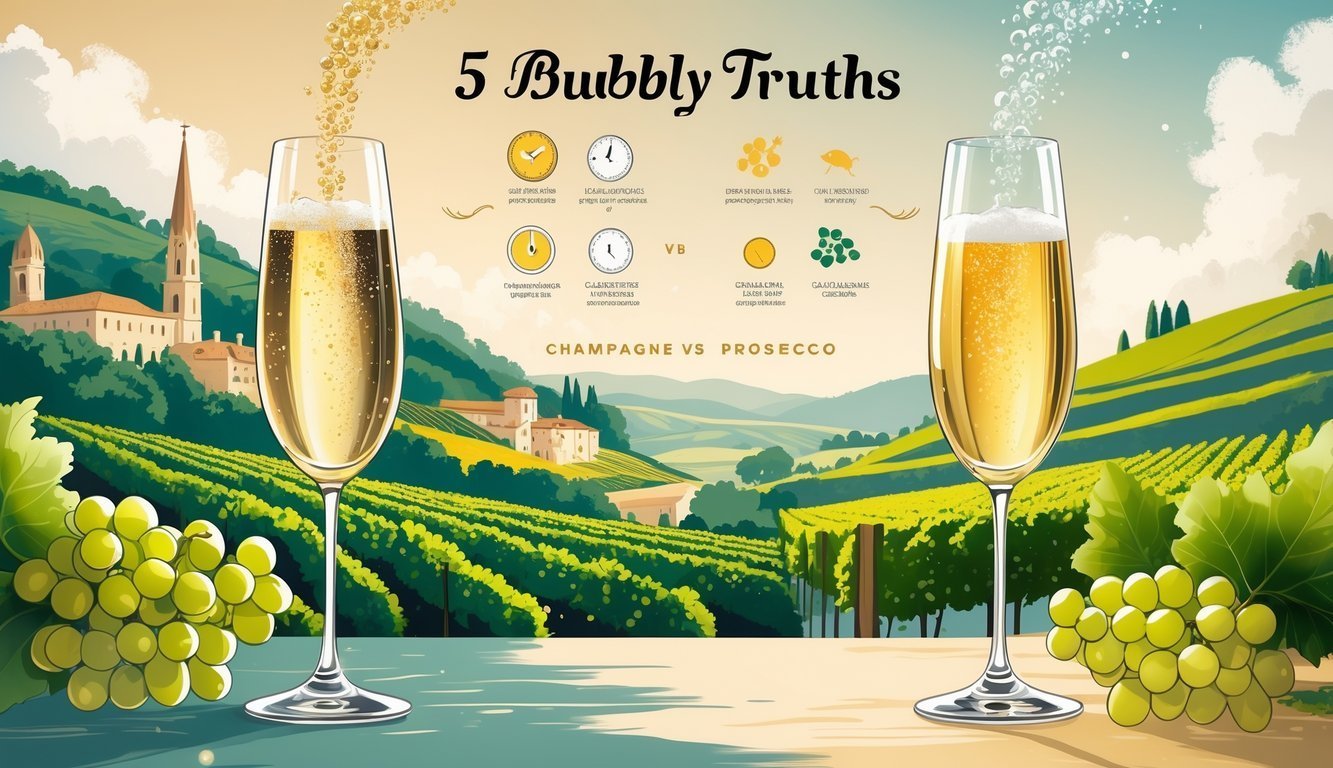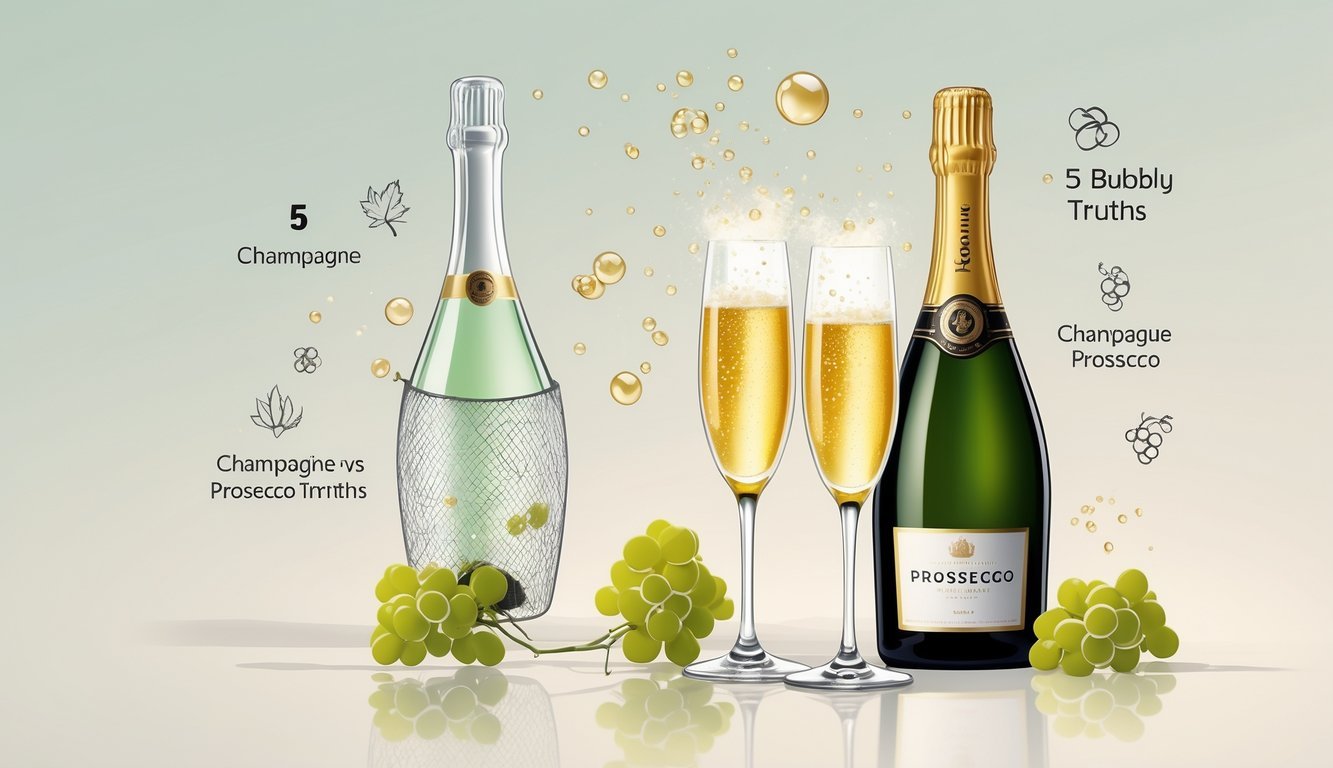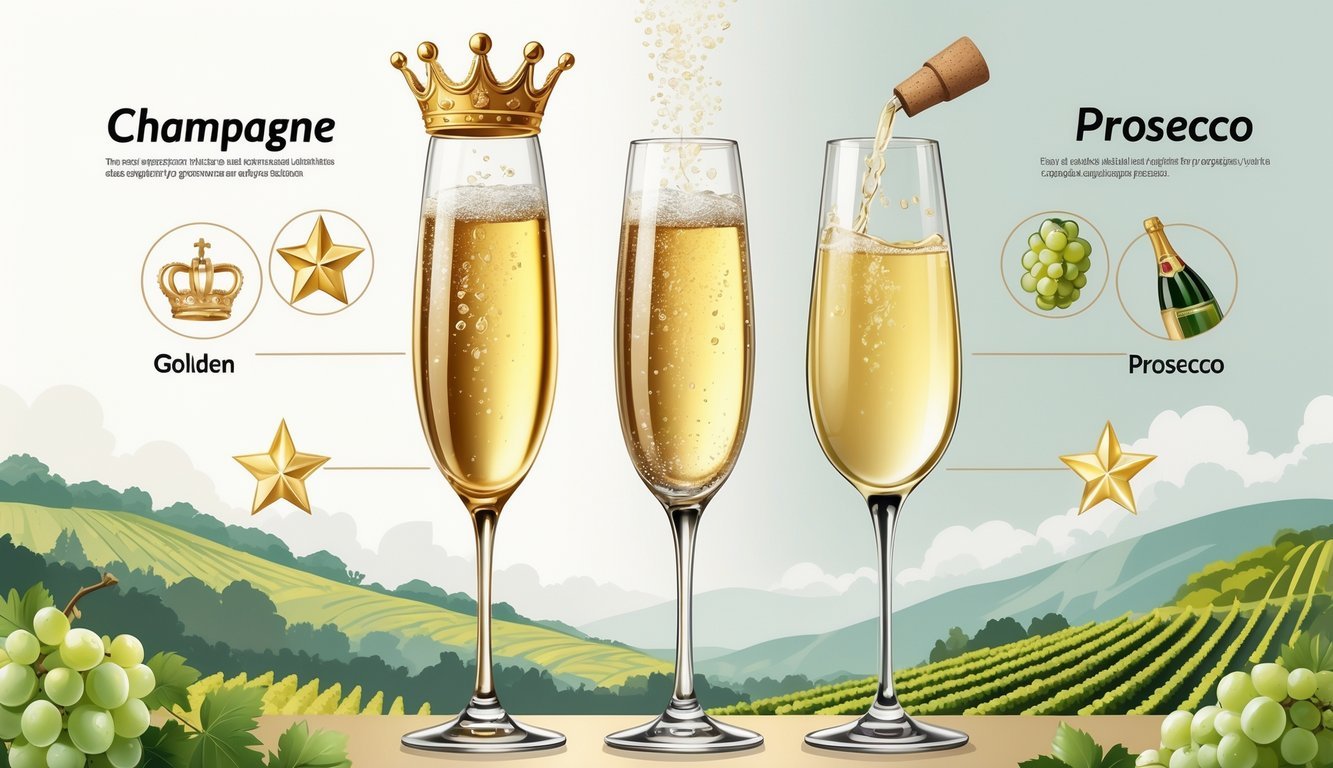PsychNewsDaily Publishers
100 Summit Drive
Burlington, MA, 01803
Telephone: (320) 349-2484
PsychNewsDaily Publishers
100 Summit Drive
Burlington, MA, 01803
Telephone: (320) 349-2484
Champagne offers a richer, creamier flavor and unique bottle fermentation process compared to Prosecco, which is lighter, fruitier, and typically more affordable.

When you stack up Champagne and Prosecco, Champagne just has something extra. It comes down to the way people make it and the richer taste that follows.
Champagne goes through a longer, trickier process, which gives it that fuller, creamier flavor you don’t really get from Prosecco. That kind of attention to detail makes Champagne feel more special and, honestly, a bit more luxurious.
Prosecco is lighter, fruitier, and usually sweeter. That can be nice, but it just doesn’t have the depth or aging potential that Champagne brings to the table.
Champagne’s bottle fermentation creates bubbles with a texture and flavor that really sticks around. If you’re after a sparkling wine with more character and tradition, Champagne is the way to go.

Champagne stands out because of its origin, the grapes, and the taste. Price and reputation help set it apart, too.
You start to get why Champagne feels so unique once you look at these details.
Champagne comes straight from a special spot in France called the Champagne region. Only sparkling wines made here can use the name.
The roots go back centuries. Winemakers in this region created the méthode champenoise, where the wine gets a second fermentation right inside the bottle.
That cool climate helps keep the grapes fresh and lively. The name “Champagne” carries a lot of tradition and prestige.
When you know the history, Champagne just feels a little more refined.
You’ll usually see three grapes in Champagne: Pinot Noir, Chardonnay, and Pinot Meunier. Each one brings something different.
Chardonnay gives floral, fresh notes. Pinot Noir adds body and some fruitiness, while Pinot Meunier softens things up.
Winemakers blend these grapes to get the right balance. Champagne can be vintage (from one year) or non-vintage (a mix of years).
If you see Grand Cru, it means the grapes came from the best vineyards. There’s also blanc de blanc (just Chardonnay) and blanc de noir (from red grapes), which change up the wine’s character.
Champagne’s bubbles are tiny and last a long time. That comes from the second fermentation in the bottle, and it gives a creamy, smooth texture.
You usually pick up aromas like apples or pears, sometimes floral hints, and even a bit of toast or brioche from aging on lees.
Good Champagne tastes crisp and balanced. Dryness levels range from brut nature (super dry) to demi-sec or doux (sweeter).
There’s enough variety to suit just about anyone.
Champagne costs more than Prosecco. The strict rules and long process add to the price.
That price tag also comes from Champagne’s history and its status as a drink for big moments. People see Champagne as a luxury, while Prosecco feels more relaxed and affordable.
Prosecco is usually lighter and sweeter. Champagne offers more flavors and styles, which appeals to a lot of wine lovers.
Price comparison:
| Wine Type | Typical Price Range (per bottle) |
|---|---|
| Champagne | $40 – $200+ |
| Prosecco | $10 – $30 |
This info can help you decide when it’s worth splurging on Champagne.

Champagne and Prosecco both bring the bubbles and the party vibe. They come from different places and use different methods, which changes the taste and how you serve them.
Prosecco comes from Italy’s Veneto region, especially in the Prosecco Superiore zones. The main grape is Glera.
Winemakers use the Charmat method for Prosecco, fermenting it in big tanks instead of individual bottles.
This keeps Prosecco fresh, fruity, and crisp. It’s lighter than Champagne’s creamy, rich style.
The Charmat method also helps keep Prosecco affordable. The Veneto region’s climate and soil give Prosecco its lively, easygoing character—perfect for laid-back moments.
Choosing the right glass makes a difference. Champagne flutes or coupes show off the bubbles and aroma.
Prosecco works well in white wine glasses, which let those fresh fruit notes shine.
Prosecco is great as an aperitif. It pairs nicely with light foods like seafood, salads, or brunch.
Champagne, being richer, goes better with creamy sauces or fried foods. Both pair with cheese, but Champagne often matches up with more complex flavors.
You’ll find other sparkling wines like Cava from Spain or Crémant from France. These are made more like Champagne, with bottle fermentation.
Cavas and Crémants give you quality bubbles but usually cost less than Champagne.
If you want to mix things up, magnums (bigger bottles) keep bubbly fresher for longer. Sommeliers often suggest them for parties.
Knowing how sparkling wines are made helps you pick the right one for your taste and budget.

You might have questions about taste, alcohol, price, or calories when you’re picking between Champagne and Prosecco.
Here are a few answers that might help.
Champagne usually tastes richer and creamier, with a toasty edge. Prosecco is lighter, fruitier, and has a cleaner, crisper flavor.
Champagne generally sits around 12–12.5% alcohol. Prosecco is a bit lower, usually about 10.5–11%.
Champagne comes from France’s Champagne region, uses specific grapes, and follows a unique fermentation method. That adds complexity and those fine bubbles. Other sparkling wines might use different grapes or processes.
Champagne is almost always more expensive, thanks to its reputation and the way it’s made. Prosecco is more budget-friendly and often seen as a value pick.
Both are pretty close in calories, though Champagne can have a few more if there’s extra sugar. Prosecco is often a little lighter because it’s sweeter and has lower alcohol.
Prosecco usually tastes sweeter and leans more toward fruity notes.
Champagne, on the other hand, often comes across as drier—especially if you grab a bottle labeled Brut Nature or Brut, which barely have any sugar added at all.